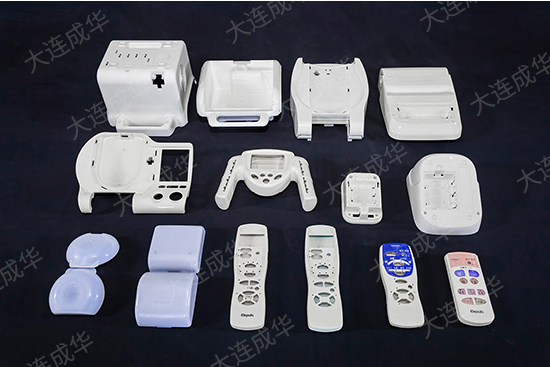Injection molding, as a mature plastic processing technology, plays an irreplaceable role in modern manufacturing. With the continuous emergence of new materials and technologies, injection molding will continue to drive the development of various industries and meet the increasingly diverse market demands. The production cycle of injection molding is short and suitable for large-scale production. The precision of the mold is high, and it can produce products with complex shapes and precise dimensions.
The process parameters of injection molding have a significant impact on product quality, mainly including injection pressure: injection pressure determines the speed and filling effect of molten plastic injected into the mold. Excessive pressure may cause product flash or mold damage, while insufficient pressure may lead to insufficient filling. Injection speed: Injection speed affects the flow state of molten plastic in the mold. Too fast speed may cause turbulence and bubbles, while too slow speed may result in uneven cooling.
How to choose the appropriate annealing temperature and time to handle deformation of injection molded products in Dalian?
Consider the characteristics of plastic materials
Crystalline plastics: These plastics have a clear melting point, and the annealing temperature is generally 10-20 ℃ below the melting point. For example, the melting point of polypropylene (PP) is about 160-170 ℃, and the annealing temperature can be selected between 140-150 ℃. The annealing time is relatively long, usually 2-4 hours, because the crystallization process requires some time to adjust the arrangement of molecular chains.
Amorphous plastics: Referring to the glass transition temperature (Tg), the annealing temperature is generally 10-20 ℃ above Tg. The Tg of polystyrene (PS) is about 80-100 ℃, and the annealing temperature can be between 90-120 ℃. The annealing time is relatively short compared to crystalline plastics, usually 1-2 hours, mainly to eliminate internal stress.
Consider the structure and size of the product
Structural complexity: For products with complex structures, such as those with deep holes, thin walls, and uneven thick walls, the internal stress distribution is complex. The annealing temperature can be appropriately reduced by 10-20 ℃ to avoid new deformation caused by high temperature during the annealing process. The annealing time needs to be extended by 20% -50% to ensure that the stress in all parts can be fully released.
Size: Large products require higher heat for uniform heating, and the annealing temperature can be appropriately increased by 5-10 ℃, while the annealing time should be significantly extended. For example, for larger plastic boxes, the annealing time may take 4-8 hours to ensure that the entire product can achieve a uniform annealing effect.
Consider the degree and cause of deformation
Deformation degree: For products with slight deformation, the annealing temperature can be taken as the lower limit of the normal range, and the annealing time can also be appropriately shortened. Products with severe deformation require higher annealing temperatures and longer annealing times. For products with deformation within 5%, annealing time may only take 1-2 hours; Products with deformation exceeding 10% may require annealing time of 3-6 hours.
Reason for deformation: If the deformation is caused by uneven cooling leading to surface stress concentration, the annealing temperature can be appropriately reduced, with a focus on uniformly heating to eliminate stress. The annealing time is determined based on the degree of deformation. If the internal stress is too high due to improper injection molding process parameters, such as excessive injection pressure or long holding time, higher annealing temperature and longer annealing time may be required to fully relax the molecular chains.
Refer to past experience and experiments
Reference experience data: Refer to relevant plastic processing manuals, technical materials, or consult experienced peers to obtain annealing process parameters for similar materials and products as a reference.
Conduct experiments: Through small-scale experiments, set different annealing temperature and time combinations to test the dimensional accuracy, mechanical properties, and other aspects of the processed products, observe deformation recovery, and determine better annealing process parameters. For example, first set the annealing temperatures to 100 ℃, 110 ℃, and 120 ℃, and the annealing times to 1 hour, 2 hours, and 3 hours, respectively. Conduct 9 sets of experiments to compare and analyze the deformation correction effect and performance changes of the products, in order to determine the optimal parameters.
Injection molding is a plastic processing technology widely used in modern manufacturing. It involves injecting molten plastic material into a mold, cooling and solidifying it to form the desired shape of the product. Due to its high efficiency, precision, and large-scale production capabilities, injection molding occupies an important position in multiple industries such as automotive, electronics, medical, home appliances, and packaging.
Mold is a key component that determines the shape and size of injection molded products, usually consisting of two parts: moving mold and fixed mold. When the moving mold and the fixed mold are closed, a closed cavity is formed, and the plastic melt flows and forms inside the cavity. The mold also includes auxiliary structures such as pouring system, cooling system, and ejector system to ensure the smooth progress of the injection molding process and the smooth demolding of the product.







